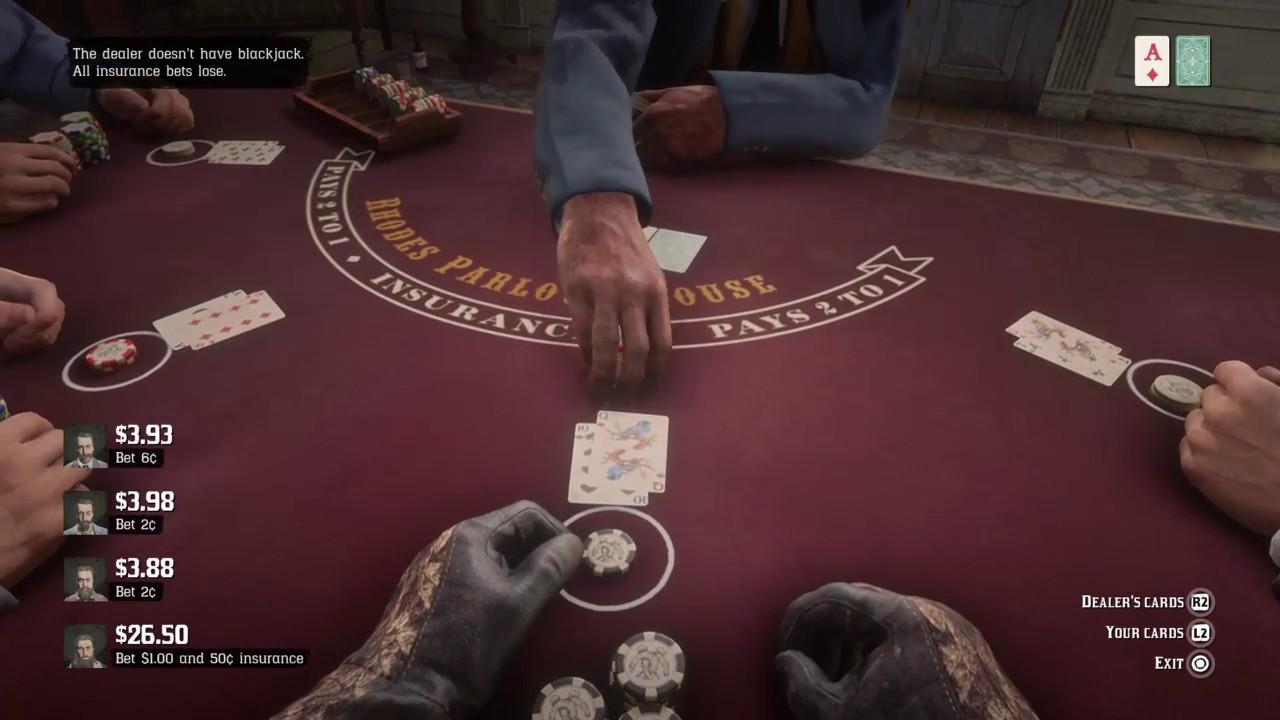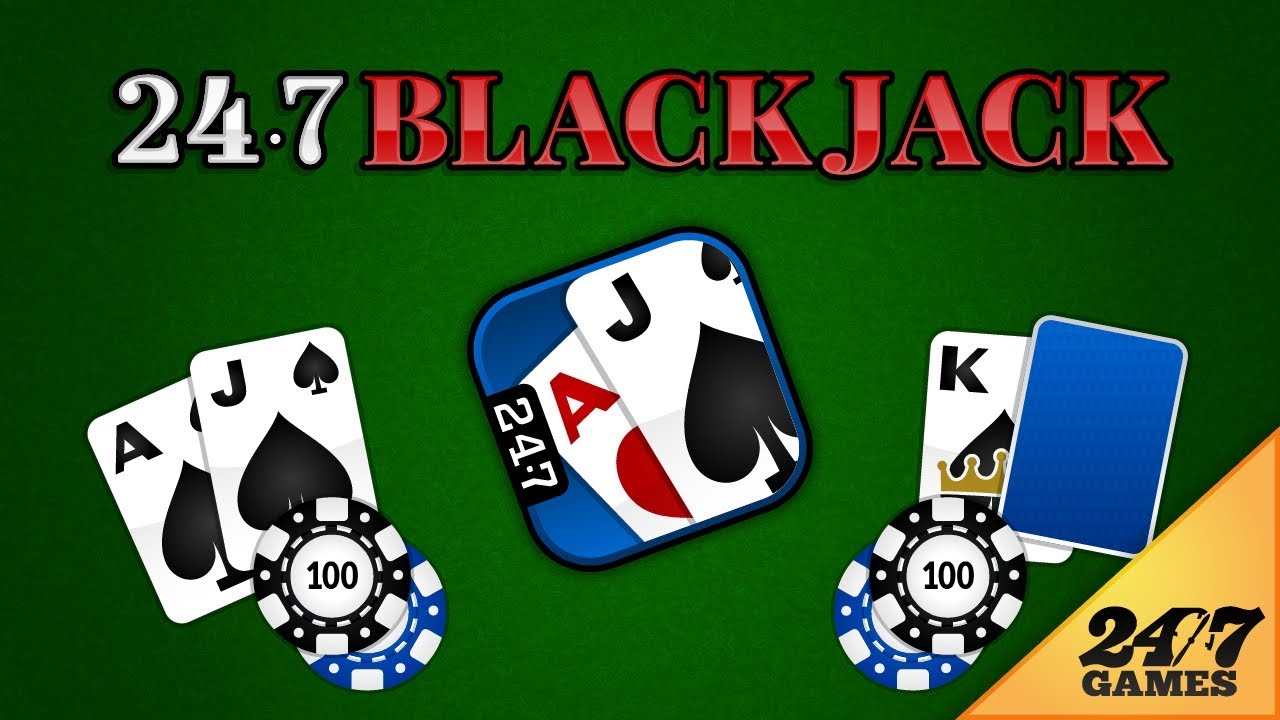Note: Where changes in the house edge due to changes in the rules are stated in percentage terms, the difference is usually stated here in percentage points, not a percentage. For example, if an edge of 10% is reduced to 9%, it is reduced by one percentage point, not reduced by ten percent.
Blackjack rules are generally set by regulations that establish permissible rule variations at the casino's discretion.[13] Blackjack comes with a "house edge"; the casino's statistical advantage is built into the game. Most of the house's edge comes from the fact that the player loses when both the player and dealer bust. Blackjack players using basic strategy lose on average less than 1% of their action over the long run, giving blackjack one of the lowest edges in the casino. The house edge for games where blackjack pays 6 to 5 instead of 3 to 2 increases by about 1.4%, though. Player deviations from basic strategy also increase the house edge.

Dealer hits soft 17
Each game has a rule about whether the dealer must hit or stand on soft 17, which is generally printed on the table surface. The variation where the dealer must hit soft 17 is abbreviated "H17" in blackjack literature, with "S17" used for the stand-on-soft-17 variation. Substituting an "H17" rule with an "S17" rule in a game benefits the player, decreasing the house edge by about 0.2%.

Number of decks
All things being equal, using fewer decks decreases the house edge. This mainly reflects an increased likelihood of player blackjack, since if the player draws a ten on their first card, the subsequent probability of drawing an ace is higher with fewer decks. It also reflects the decreased likelihood of a blackjack–blackjack push in a game with fewer decks.
Casinos generally compensate by tightening other rules in games with fewer decks, to preserve the house edge or discourage play altogether. When offering single-deck blackjack games, casinos are more likely to disallow doubling on soft hands or after splitting, restrict resplitting, require higher minimum bets, and pay the player less than 3:2 for a winning blackjack.
The following table illustrates the mathematical effect on the house edge of the number of decks, by considering games with various deck counts under the following ruleset: double after split allowed, resplit to four hands allowed, no hitting split aces, no surrendering, double on any two cards, original bets only lost on dealer blackjack, dealer hits soft 17, and cut-card used. The increase in house edge per unit increase in the number of decks is most dramatic when comparing the single-deck game to the two-deck game, and becomes progressively smaller as more decks are added.
Late/early surrender
Surrender, for those games that allow it, is usually not permitted against a dealer blackjack; if the dealer's first card is an ace or ten, the hole card is checked to make sure there is no blackjack before surrender is offered. This rule protocol is consequently known as "late" surrender. The alternative, "early" surrender, gives the player the option to surrender before the dealer checks for blackjack, or in a no hole card game. Early surrender is much more favorable to the player than late surrender.
For late surrender, however, while it is tempting to opt for surrender on any hand which will probably lose, the correct strategy is to only surrender on the very worst hands, because having even a one-in-four chance of winning the full bet is better than losing half the bet and pushing the other half, as entailed by surrendering.
Resplitting
If the cards of a post-split hand have the same value, most games allow the player to split again, or "resplit". The player places a further wager, and the dealer separates the new pair dealing a further card to each as before. Some games allow unlimited resplitting, while others may limit it to a certain number of hands, such as four hands (for example, "resplit to 4").
Hit/resplit split aces
After splitting aces, the common rule is that only one card will be dealt to each ace; the player cannot split, double, or take another hit on either hand. Rule variants include allowing resplitting aces or allowing the player to hit split aces. Games allowing aces to be resplit are not uncommon, but those allowing the player to hit split aces are extremely rare. Allowing the player to hit hands resulting from split aces reduces the house edge by about 0.13%; allowing resplitting of aces reduces the house edge by about 0.03%. Note that a ten-value card dealt on a split ace (or vice versa) will not be counted as a blackjack but as a soft 21.
No double after split
After a split, most games allow doubling down on the new two-card hands. Disallowing doubling after a split increases the house edge by about 0.12%.
Double on 9/10/11 or 10/11 only
Under the "Reno rule", doubling down is only permitted on hard totals of 9, 10, or 11 (under a similar European rule, only 10 or 11). The basic strategy would otherwise call for some doubling down with hard 9 and soft 13–18, and advanced players can identify situations where doubling on soft 19–20 and hard 8, 7, and even 6 is advantageous. The Reno rule prevents the player from taking advantage of double-down in these situations and thereby increases the player's expected loss. The Reno rule increases the house edge by around 0.1%, and its European version by around 0.2%.
No hole card and OBO
In most non-U.S. casinos, a "no hole card" game is played, meaning that the dealer does not draw nor consult their second card until after all players have finished making decisions. With no hole card, it is rarely the correct basic strategy to double or split against a dealer ten or ace, since a dealer blackjack will result in the loss of the split and double bets; the only exception is with a pair of aces against a dealer 10, where it is still correct to split. In all other cases, a stand, hit, or surrender is called for. For instance, when holding 11 against a dealer 10, the correct strategy is to double in a hole card game (where the player knows the dealer's second card is not an ace), but to hit in a no-hole card game. The no-hole-card rule adds approximately 0.11% to the house edge.
The "original bets only" rule variation appearing in certain no hole card games states that if the player's hand loses to a dealer blackjack, only the mandatory initial bet ("original") is forfeited, and all optional bets, meaning doubles and splits, are pushed. "Original bets only" is also known by the acronym OBO; it has the same effect on basic strategy and the house edge as reverting to a hole card game.[14]
Altered payout for a winning blackjack
In many casinos, a blackjack pays only 6:5 or even 1:1 instead of the usual 3:2. This is most common at tables with lower table minimums. Although this payoff was originally limited to single-deck games, it has spread to double-deck and shoe games. Among common rule variations in the U.S., these altered payouts for blackjack are the most damaging to the player, causing the greatest increase in house edge. Since blackjack occurs in approximately 4.8% of hands, the 1:1 game increases the house edge by 2.3%, while the 6:5 game adds 1.4% to the house edge. Video blackjack machines generally pay a 1:1 payout for a blackjack.[11]
Dealer wins ties
The rule that bets on tied hands are lost rather than pushed is catastrophic to the player. Though rarely used in standard blackjack, it is sometimes seen in "blackjack-like" games, such as in some charity casinos.